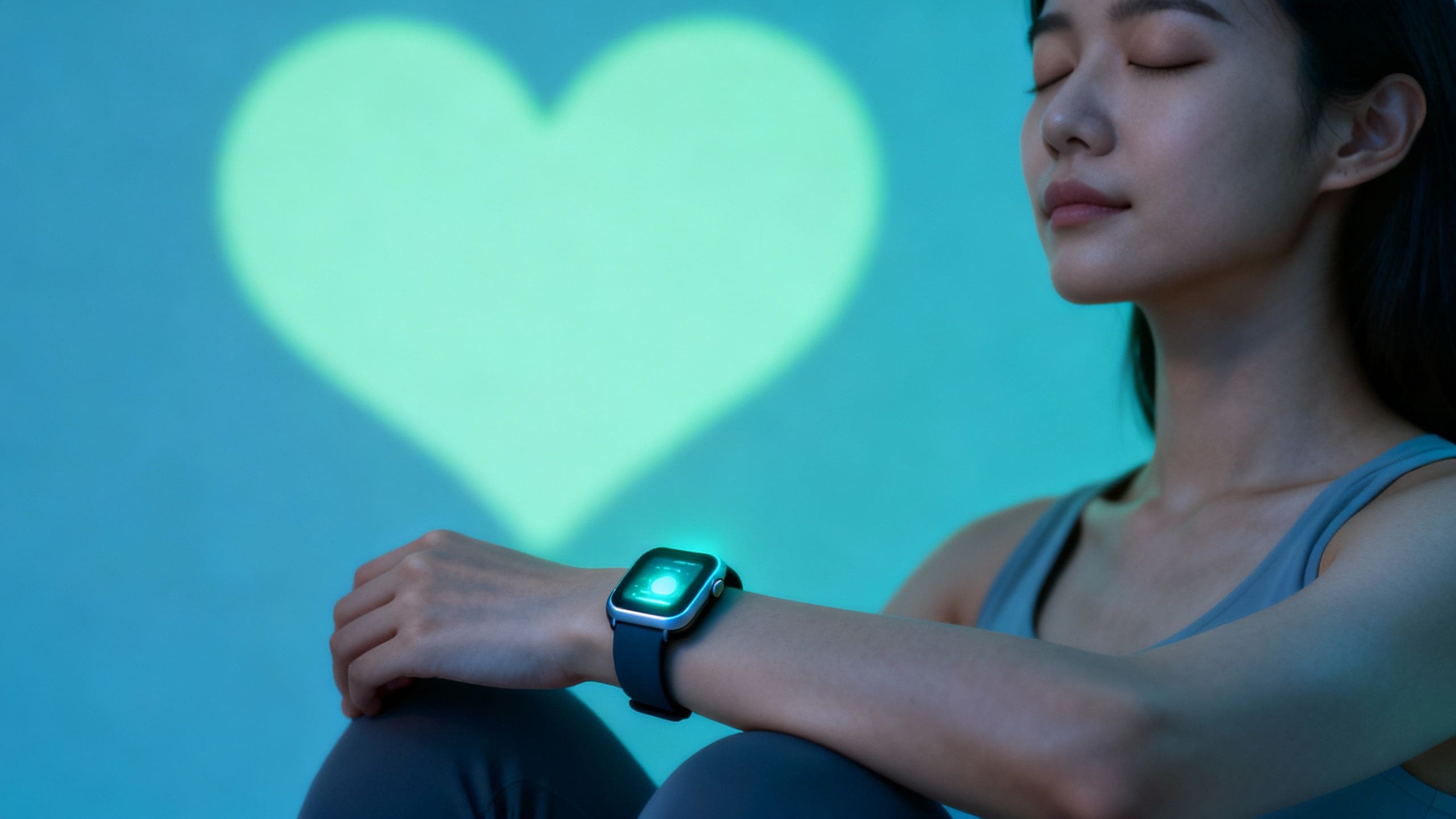Introduction
Heart-rate variability (HRV) has emerged as a vital biomarker in understanding heart health, with wearables making it easier than ever for individuals to monitor their optimal heart function. HRV, when paired with tools like breathing exercises, optimized sleep routines, and recovery-smart training, provides a holistic approach to stress reduction and cardiovascular wellbeing. The integration of these methods can significantly bolster your heart health, lower stress, and support a truly optimal heart. Read on to learn how you can harness the power of HRV, wearables, and smart recovery strategies to minimize heart disease risk and maximize cardiovascular outcomes.
What is Guide to heart‑rate variability, tracking, breathing exercises, sleep optimization, and recovery‑smart training.
Heart-rate variability (HRV) is the variation in the time interval between heartbeats. This measurement reflects the heart’s ability to respond to stress, physical activity, and rest—critical factors for maintaining heart health and cultivating an optimal heart. Discovered through early ECG studies in the 1960s, HRV’s biological importance lies in its connection to the autonomic nervous system’s regulation of cardiac function. High HRV generally indicates strong adaptiveness and cardiovascular resilience, while low HRV is linked to higher stress and increased risk for heart disease (Shaffer & Ginsberg, 2017; Singh et al., 2022).
Benefits and Outcomes in Heart Disease
Improving HRV through wearables and guided interventions has been associated with multiple heart health benefits:
- Blood Pressure: HRV biofeedback and breathing exercises can help lower blood pressure (Lehrer et al., 2020).
- Plaque & Cholesterol: While direct effects on arterial plaque and cholesterol are still under investigation, higher HRV correlates with healthier lipid profiles due to stress modulation (Thayer et al., 2010).
- Clotting & Inflammation: Enhanced HRV is linked with lower systemic inflammation and better clotting profiles, both important for heart health (Shaffer & Ginsberg, 2017).
- Reduced Stress: Wearables make HRV tracking accessible, supporting readiness assessment, sleep quality, and recovery mapping for an optimal heart (Stanley et al., 2013).

Research Insights
Recent studies underscore the value of HRV-focused interventions for cardiovascular health:
- Human Trials: Randomized controlled trials demonstrate that HRV biofeedback significantly improves outcomes in individuals recovering from myocardial infarction, lowering anxiety, depression, and arrhythmia risk (Lehrer et al., 2020).
- Wearable Accuracy: Systematic reviews find that modern wearables provide reliable HRV tracking, although clinical-grade devices remain the gold standard (Kinnunen et al., 2020).
- Sleep Integration: Meta-analyses confirm that good sleep hygiene, tracked by wearables, improves HRV, resilience, and overall heart health (Singh et al., 2022).
- Guidelines: Major cardiac associations now recognize HRV as a marker for heart disease prognosis and recovery potential (American Heart Association, 2022).
Practical Applications
Incorporating HRV and recovery-smart strategies for heart health and achieving an optimal heart can be straightforward:
- Daily Tracking: Use wearables like smartwatches or chest straps to monitor your HRV trends, noting dips after stress or poor sleep (Kinnunen et al., 2020).
- Breathing Exercises: Engage in slow, diaphragmatic breathing (5-6 breaths/minute) for 10–20 minutes daily to promote optimal HRV (Lehrer et al., 2020).
- Sleep Optimization: Prioritize 7–9 hours of quality sleep to maximize nightly HRV (Singh et al., 2022).
- Recovery Training: Integrate active recovery and rest days tailored by your HRV status to enhance performance and reduce cardiovascular strain (Stanley et al., 2013).
- Who Benefits Most: Individuals with hypertension, athletes, and patients at elevated risk for heart disease benefit most from systematic HRV optimizations.
Risks & Limitations
While HRV tracking and associated interventions are generally safe, there are limitations:
- Device Variability: Consumer-grade wearables may show slight inaccuracies compared to ECG devices (Kinnunen et al., 2020).
- Individual Variation: HRV norms can differ widely based on age, gender, and genetics; what’s “optimal” is relative (Shaffer & Ginsberg, 2017).
- Overinterpretation: HRV is best used as one aspect of heart health, not a sole determinant (Thayer et al., 2010).
- Medical Advice: Always confer with health professionals—self-directed changes might be inappropriate for some populations (American Heart Association, 2022).
Key Takeaways
- HRV is a powerful, easily trackable indicator of heart health and optimal heart status.
- Wearables bring accessible, real-time HRV tracking to everyone, fueling actionable lifestyle changes.
- Breathing exercises, quality sleep, and recovery-smart training all foster better HRV and cardiovascular outcomes.
- Evidence supports HRV’s role in heart disease prevention, recovery, and stress management.
- Consider device accuracy and individual variation; consult professionals for personalized guidance.
Frequently Asked Questions
What is a good HRV score for heart health?
HRV is highly individual—higher values generally suggest better heart health and resilience, but age and fitness matter. Learn more.
Can wearables accurately measure HRV for optimal heart outcomes?
Many modern wearables provide reliable HRV trends, but clinical-grade devices remain the standard in research. See studies.
How do breathing exercises improve HRV?
Controlled breathing modulates autonomic function, raising HRV and supporting heart health. Clinical evidence here.
Does better sleep really impact my HRV and heart health?
Improved sleep is consistently linked to healthier HRV and improved cardiovascular function. Meta-analyses confirm.
Should I change my heart disease treatment based on HRV alone?
No—always coordinate changes with healthcare providers. HRV is useful but not a replacement for medical advice. AHA guidelines.
Suggested Links
- American Heart Association: Heart-rate Variability Overview
- NIH: HRV Research
- PubMed: Wearables and Cardiovascular Outcomes
Conclusion
Embracing HRV tracking with wearables, practicing regular breathing exercises, sleeping well, and recovery-smart training, you unlock new dimensions in heart health and the potential for an optimal heart. These evidence-backed approaches empower you to take proactive steps in preventing heart disease and fostering lifelong cardiovascular wellness. Take action today: explore HRV monitoring, refine your lifestyle, and consult your physician for personalized strategies to optimize your heart health journey.



